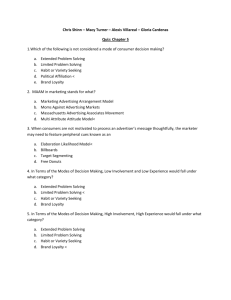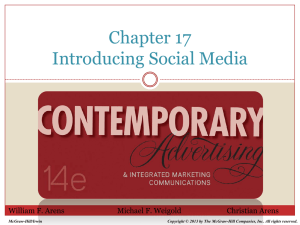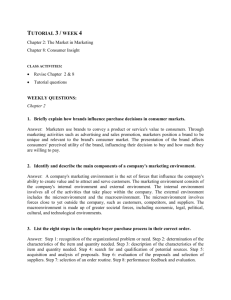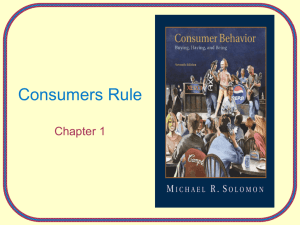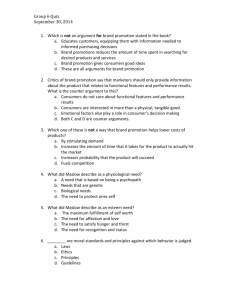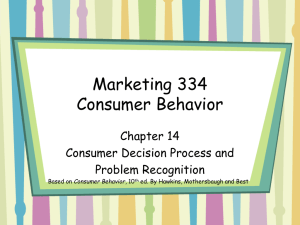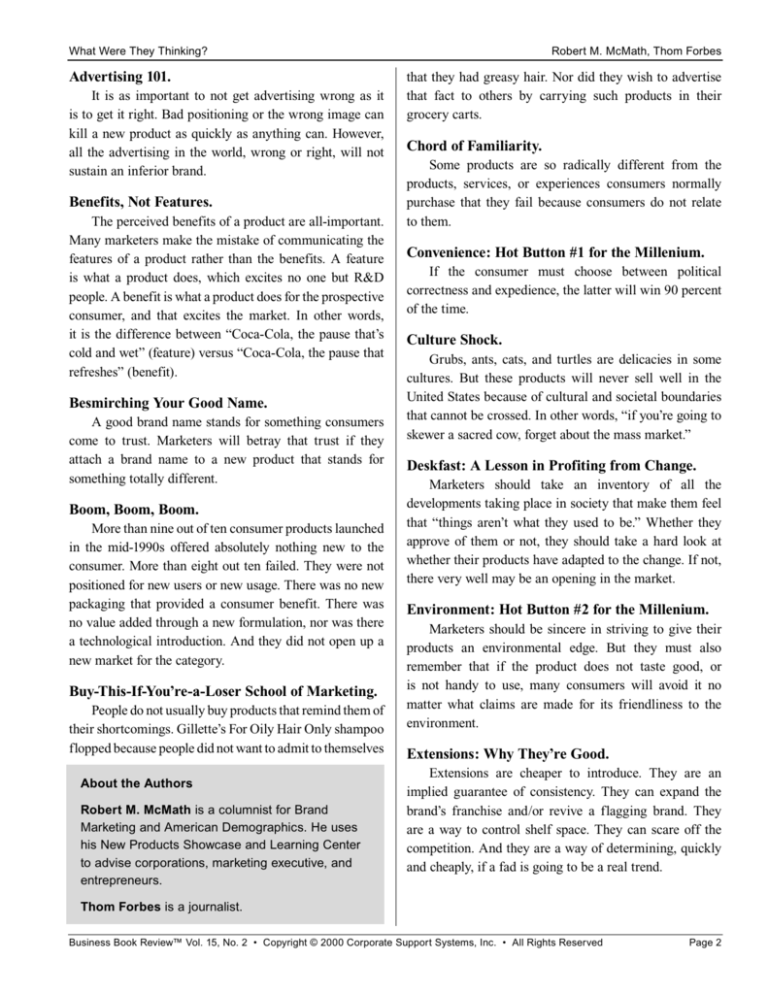
What Were They Thinking?
Advertising 101.
It is as important to not get advertising wrong as it
is to get it right. Bad positioning or the wrong image can
kill a new product as quickly as anything can. However,
all the advertising in the world, wrong or right, will not
sustain an inferior brand.
Benefits, Not Features.
The perceived benefits of a product are all-important.
Many marketers make the mistake of communicating the
features of a product rather than the benefits. A feature
is what a product does, which excites no one but R&D
people. A benefit is what a product does for the prospective
consumer, and that excites the market. In other words,
it is the difference between “Coca-Cola, the pause that’s
cold and wet” (feature) versus “Coca-Cola, the pause that
refreshes” (benefit).
Besmirching Your Good Name.
A good brand name stands for something consumers
come to trust. Marketers will betray that trust if they
attach a brand name to a new product that stands for
something totally different.
Boom, Boom, Boom.
More than nine out of ten consumer products launched
in the mid-1990s offered absolutely nothing new to the
consumer. More than eight out ten failed. They were not
positioned for new users or new usage. There was no new
packaging that provided a consumer benefit. There was
no value added through a new formulation, nor was there
a technological introduction. And they did not open up a
new market for the category.
Buy-This-If-You’re-a-Loser School of Marketing.
People do not usually buy products that remind them of
their shortcomings. Gillette’s For Oily Hair Only shampoo
flopped because people did not want to admit to themselves
About the Authors
Robert M. McMath is a columnist for Brand
Marketing and American Demographics. He uses
his New Products Showcase and Learning Center
to advise corporations, marketing executive, and
entrepreneurs.
Robert M. McMath, Thom Forbes
that they had greasy hair. Nor did they wish to advertise
that fact to others by carrying such products in their
grocery carts.
Chord of Familiarity.
Some products are so radically different from the
products, services, or experiences consumers normally
purchase that they fail because consumers do not relate
to them.
Convenience: Hot Button #1 for the Millenium.
If the consumer must choose between political
correctness and expedience, the latter will win 90 percent
of the time.
Culture Shock.
Grubs, ants, cats, and turtles are delicacies in some
cultures. But these products will never sell well in the
United States because of cultural and societal boundaries
that cannot be crossed. In other words, “if you’re going to
skewer a sacred cow, forget about the mass market.”
Deskfast: A Lesson in Profiting from Change.
Marketers should take an inventory of all the
developments taking place in society that make them feel
that “things aren’t what they used to be.” Whether they
approve of them or not, they should take a hard look at
whether their products have adapted to the change. If not,
there very well may be an opening in the market.
Environment: Hot Button #2 for the Millenium.
Marketers should be sincere in striving to give their
products an environmental edge. But they must also
remember that if the product does not taste good, or
is not handy to use, many consumers will avoid it no
matter what claims are made for its friendliness to the
environment.
Extensions: Why They’re Good.
Extensions are cheaper to introduce. They are an
implied guarantee of consistency. They can expand the
brand’s franchise and/or revive a flagging brand. They
are a way to control shelf space. They can scare off the
competition. And they are a way of determining, quickly
and cheaply, if a fad is going to be a real trend.
Thom Forbes is a journalist.
Business Book Review™ Vol. 15, No. 2 • Copyright © 2000 Corporate Support Systems, Inc. • All Rights Reserved
Page 2

